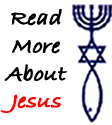






Breaking a glass at a wedding: Thus at the hour of a man's chiefest joy, his wedding, he breaks a glass under his foot to symbolize the destruction of the House of the Lord. The message is clear: Even this great moment of joy, perhaps the greatest of his life, cannot be complete as long as the Temple still lies in ruins.(1)
Building a new home: In section 560 of Rabbi Joseph Caro's (1488-1575) monumental Code of Jewish Law, we find other instances of these remembrances which were enacted by the great sages living in the generation of the Second Temple's destruction. For example, when an individual builds a home, he must leave a small section of the wall opposite the entrance blank and unplastered.(1)
![]()
Notes from Lubavitch Chabad:
There is a Midrash that relates the Evven Hashesiya - a huge rock at the center of the Temple site - is the very cornerstone of the universe, the foundation upon which the world is built.(2)
This place where King Solomon built the altar of the Holy Temple was the same place where Abraham built an altar and bound his son Isaac, where Noah built an altar upon his departure from the ark, where Cain and Abel brought their offerings and where Adam brought his sacrifice after he was created. There too Adam's creation took place.(2)
In the Temple's Holy of Holies, atop the Ark of the Covenant, were the winged cherubim, two angelic figures of gold. It is said that when the Jewish People lived in harmony and obeyed the will of the Al-mighty, the cherubim faced each other, and when the Jews did not, their faces were turned away.(2)
Inside the Ark were placed the original Tablets upon which the Ten commandments are inscribed. The Holy of Holies, in which the Ark was placed, was 20 cubits wide. Yet when the distance was measured from the Ark to the surrounding walls, there were 10 cubits on either side. The Ark was a physical object and yet did not take up physical space - because it stood at the gateway between the material and spiritual worlds.(2)
The sacrifices brought on the Temple's altar were consumed by a heavenly fire which descended from the sky in the shape of a lion, even though wood burned continuously on the altar.(2)
The Menorah - the Temple's seven branched candelabra - was fashioned with many intricate decorations and designs from a single block of gold. Moses had difficulty understanding and explaining how it should be made. Therefore, the Al-mighty told him to throw the gold ingot into the fire - and the Menorah emerged by itself, fully formed.(2)
Though the Temple is destroyed, one wall has remained intact throughout the centuries - the Western Wall. All over the world, Jews pray three times daily toward the site of the Temple, the gate through which all our prayers are heard and answered. As our sages tell us, "The Divine Presence never departs from the Western Wall."(2)
Temple related articles of interest include:
1). Temple Notes from the Temple Institute Web Site. http://templeinstitute.org/
2). Lubavitch Chabad of Peoria 5769 (2008-9) Calendar.